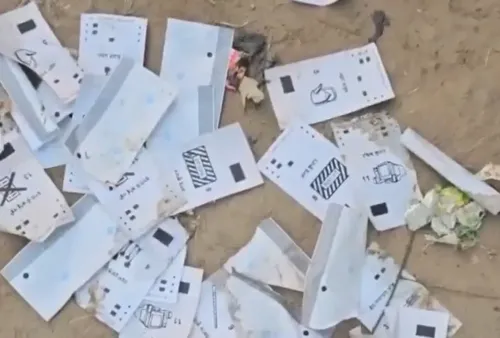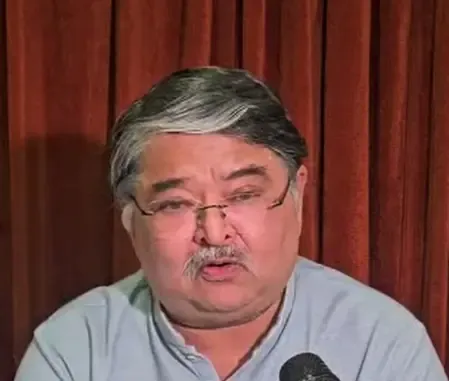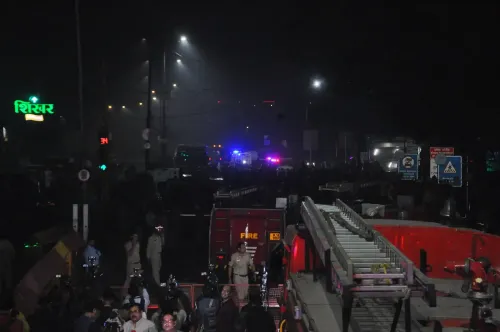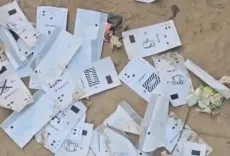Chaiti Chhath Festival Commences in Bihar with Devotion and Grand Celebrations
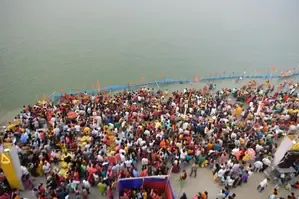
Synopsis
Key Takeaways
- The festival starts with Nahay-Khay and Kharna rituals.
- Devotees observe a 36-hour Nirjala fast.
- Safety measures include barricades and lighting at ghats.
- The festival features five distinct zones for managing the ghats.
- Municipal authorities ensure cleanliness and convenience for participants.
Patna, April 1 (NationPress) The four-day celebration of Chaiti Chhath has officially begun throughout Bihar, creating an atmosphere filled with devotion and the melodious tunes of traditional folk songs honoring the Sun God and Chhathi Maiya.
The festivities kicked off with Nahay-Khay on Tuesday, where devotees partook in a sacred wash in the Ganges and other rivers before enjoying their initial Prasad. The principal rituals will start on April 2 with Kharna, during which devotees observe a full-day fast, breaking it in the evening with gur-rice kheer, fruits, and roti. This will be succeeded by an intense 36-hour Nirjala fast, where participants refrain from both food and water.
On April 3, devotees will present the first Arghya (offering) to the setting sun, and the celebration will wrap up on April 4 with the second Arghya to the rising sun, followed by the breaking of the fast.
Anticipating a large gathering of devotees, the Patna Municipal Corporation, in partnership with the district administration, has initiated extensive measures to ensure safety, cleanliness, and convenience at 41 designated ghats and 7 ponds, ranging from Patipul Digha Ghat to Didarganj. Barricades have been established to prevent overcrowding and facilitate the orderly conduct of rituals.
Authorities have also set up temporary lighting along the main and access roads for nighttime ease. Makeshift changing rooms and additional amenities have been arranged at the ghats to uphold hygiene and provide a seamless experience for devotees. A thorough cleaning initiative is also underway at these ghats.
To manage the festival effectively, the Patna district administration has categorized the Chhath ghats into five zones.
Bankipur Zone: 12 ghats -- Ghagha Ghat, Roshan Ghat, Pathri Ghat, Chaudhary Tola Ghat, Patna College Ghat, Rani Ghat, Law College Ghat, Barharwa Ghat, Gandhi Ghat, Krishna Ghat, Kadam Ghat, and Kalighat.
Azimabad Zone: 9 ghats -- Gai Ghat, Kantahi Ghat, Bhadra Ghat, Mahavir Ghat, Adarsh Ghat, Mittan Ghat, Seedhi Ghat, Dull Ghat, and Maharaj Ghat.
Patna City Zone: 12 ghats -- Mirchai Ghat, Kangan Ghat, Kilaghat, Khidki Ghat, Gaderia Ghat, Pirdamaria Ghat, Nuruddinganj Ghat, Damdahi Ghat, Abdur Rahmanpur Ghat, Noorpur Ghat, Panchmukhi Ghat, and Mahavir Ghat.
Patliputra Zone: 7 ghats -- Patipul East and West Ghats, Ghat No. 93, Ghat No. 88, Ghat No. 83, Collectorate Ghat, Bans Ghat, and LCT Ghat.
New Capital Zone: 1 Ganga Ghat plus 7 ponds -- Mahendu Ghat, Manikchand Pond, BMP Pond, Beur Village Pond, Kachhi Pond, Panchmandir Pond, Sanjay Gandhi Biological Park Pond, and Mahua Bagh Pond.
Municipal officials, under the guidance of the Patna Municipal Commissioner, are conducting routine inspections to ensure all arrangements are finalized promptly. As local markets bustle with puja essentials and the cities resonate with Chhath songs, Bihar is experiencing a magnificent celebration of faith, purity, and devotion.


